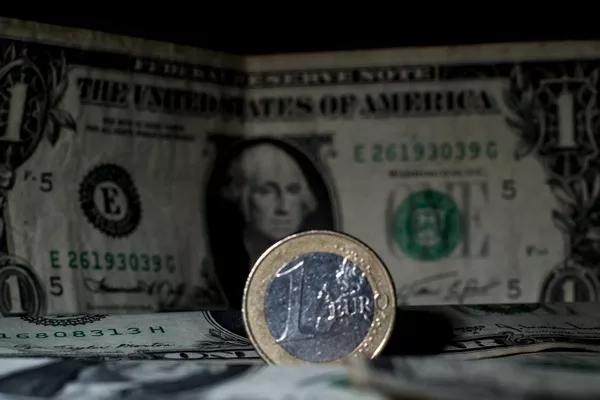The United States one-dollar coin, often referred to as the “golden dollar,” has undergone several design changes and iterations throughout its history. In this article, we will explore the current design of the US one-dollar coin, tracing its evolution, examining its notable features, and understanding the significance of its design elements.
A Brief History of the US One-Dollar Coin
The concept of a one-dollar coin in the United States dates back to the nation’s early years. The Coinage Act of 1792, which established the US Mint, authorized the production of the silver dollar. Over the years, various iterations of the one-dollar coin were minted, including the famous Morgan silver dollar and the Peace dollar. These coins were primarily made of silver and featured iconic designs, often commemorating important events in American history.
However, in the mid-20th century, the use of the one-dollar bill became more prevalent, and the production of one-dollar coins declined. It wasn’t until the late 20th century that the US government decided to reintroduce a one-dollar coin, known as the Sacagawea dollar, in an effort to promote its use in daily transactions.
The Sacagawea Dollar: An Introduction
The Sacagawea dollar, first issued in 2000, was named after the Shoshone woman Sacagawea, who played a crucial role as a guide and interpreter during the Lewis and Clark Expedition in the early 1800s. The coin was part of an initiative to create a modern, durable, and cost-effective alternative to the one-dollar bill.
Design Elements of the Sacagawea Dollar
The Sacagawea dollar features a unique and culturally significant design that celebrates the contributions of Sacagawea and the Native American community. Here are the key design elements:
Obverse (Front) Design:
Portrait of Sacagawea: The obverse of the coin prominently displays a depiction of Sacagawea, facing left. She is depicted with her infant son, Jean-Baptiste Charbonneau, strapped to her back. This portrayal pays homage to her vital role as an explorer and a symbol of women’s contributions to American history.
Inscription: Above the portrait, the word “LIBERTY” is inscribed, reflecting a core American value.
Mint Year and Mint Mark: The year of mintage and the mint mark (indicating the location where the coin was minted) are also found on the obverse.
Designer’s Initials: The initials of the designer, Glenna Goodacre, are located on Sacagawea’s shoulder.
Reverse (Back) Design:
An Eagle in Flight: The reverse of the Sacagawea dollar features a soaring bald eagle, symbolizing the strength and freedom of the United States.
Agricultural Scene: Surrounding the eagle is an intricate design representing agriculture, with stalks of corn, tobacco, and cotton. This element pays tribute to the agricultural heritage of Native American communities.
Inscription: The words “UNITED STATES OF AMERICA” and “ONE DOLLAR” are inscribed on the reverse, along with the phrase “E PLURIBUS UNUM,” which means “Out of many, one” in Latin.
Designer’s Initials: The initials of the reverse designer, Thomas D. Rogers Sr., can be found near the base of the design.
Continuity and Collectibility
One notable feature of the Sacagawea dollar is its continuity in design. Unlike some other US coin denominations, the design of the Sacagawea dollar has remained relatively consistent since its introduction in 2000. This continuity allows collectors and enthusiasts to easily identify and appreciate the coin across different minting years.
While the obverse of the coin remains dedicated to Sacagawea and her son, the reverse design has seen subtle changes over the years. These changes have included modifications to the agricultural elements and the introduction of special designs to commemorate important Native American contributions, such as the Lewis and Clark Expedition.
Native American Dollars
In addition to the standard Sacagawea dollar design, the US Mint introduced the Native American dollar series in 2009. These coins feature a common obverse design with Sacagawea and her son but have unique reverse designs that honor different aspects of Native American history and culture. The reverse designs change annually and highlight significant Native American contributions, such as the creation of the Iroquois Confederacy and the contributions of Native American code talkers in World War II.
The Path Forward for the US One-Dollar Coin
While the Sacagawea dollar has been in circulation for over two decades, it has not gained the same level of popularity as the one-dollar bill. The convenience and familiarity of paper currency have made it the preferred choice for everyday transactions.
Nonetheless, the US government continues to explore ways to promote the use of the one-dollar coin, citing its longevity and environmental benefits. One such effort is the introduction of the Native American dollar series, which aims to educate the public about Native American history and culture while simultaneously increasing the circulation of one-dollar coins.
In recent years, there have also been discussions about the potential introduction of a one-dollar coin featuring prominent American women on the obverse, similar to the state quarters program that celebrated each state’s unique history. This initiative is part of broader efforts to diversify and modernize US currency.
Conclusion
The US one-dollar coin, currently represented by the Sacagawea dollar, boasts a design that pays homage to the nation’s history, culture, and the contributions of Native Americans. While it has faced challenges in gaining widespread acceptance in everyday transactions, its unique and evolving designs make it a collectible and educational currency for both numismatists and the general public. As the United States continues to explore ways to promote the use of one-dollar coins, the design of the coin may evolve further, reflecting the changing landscape of American history and culture.


